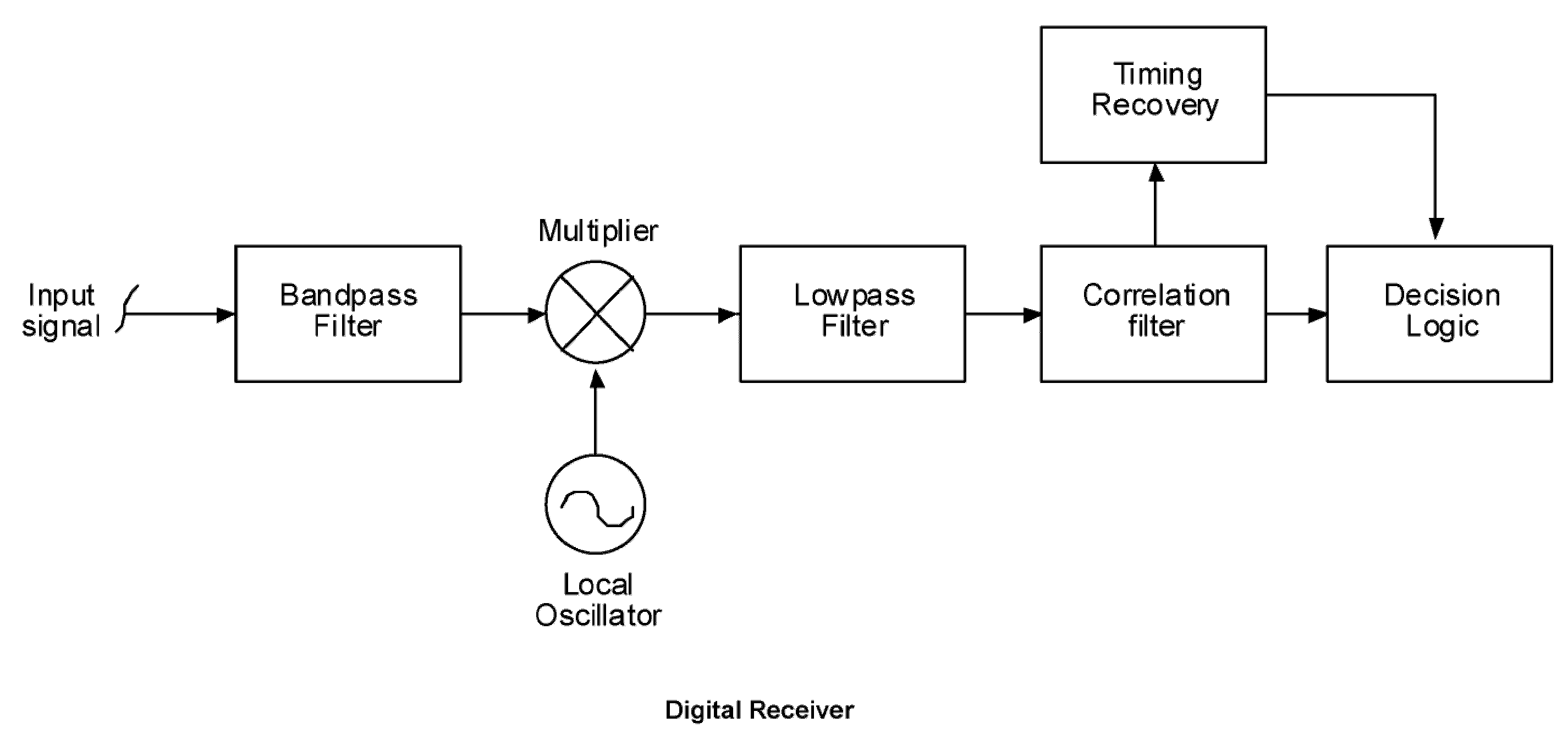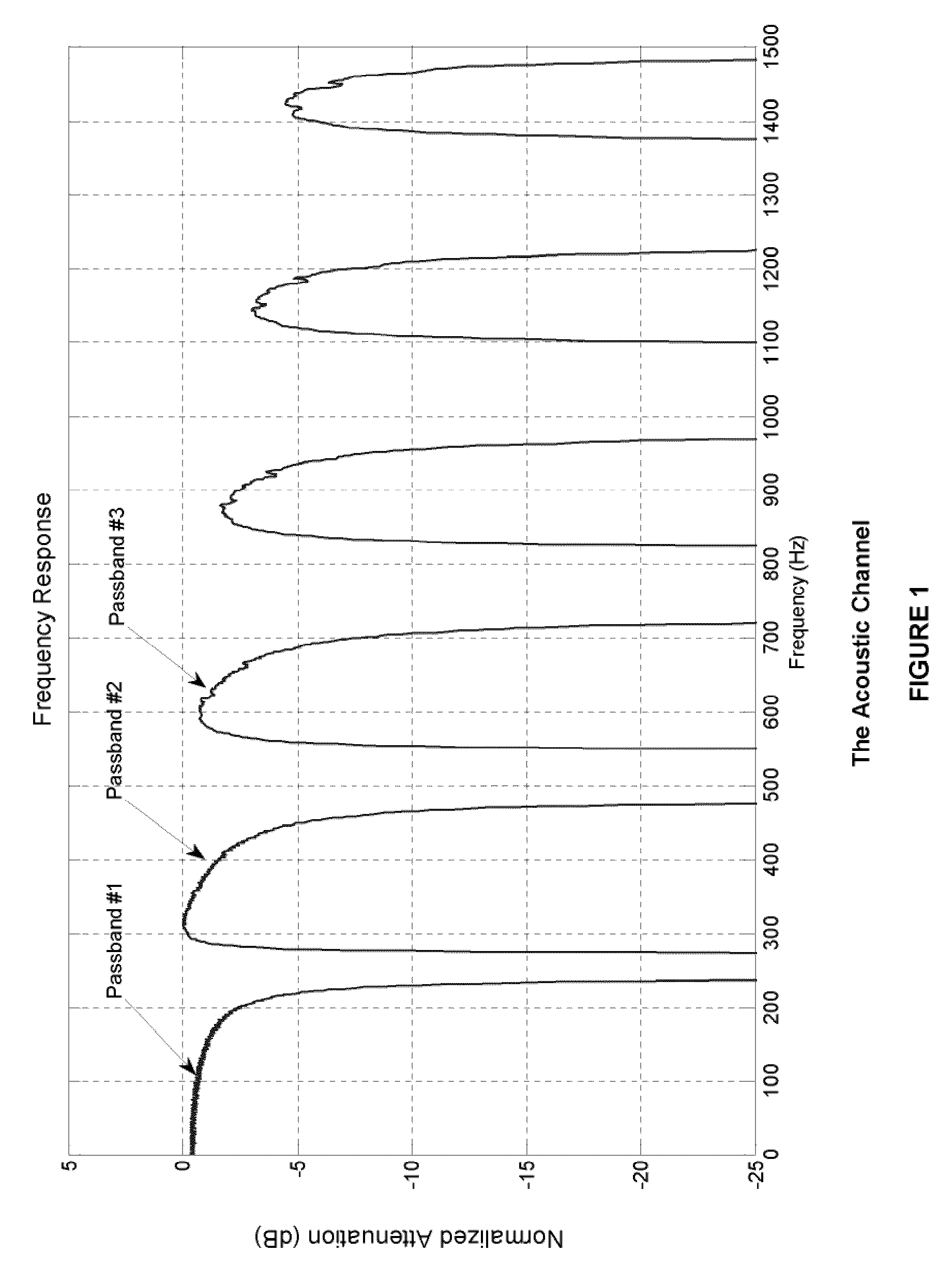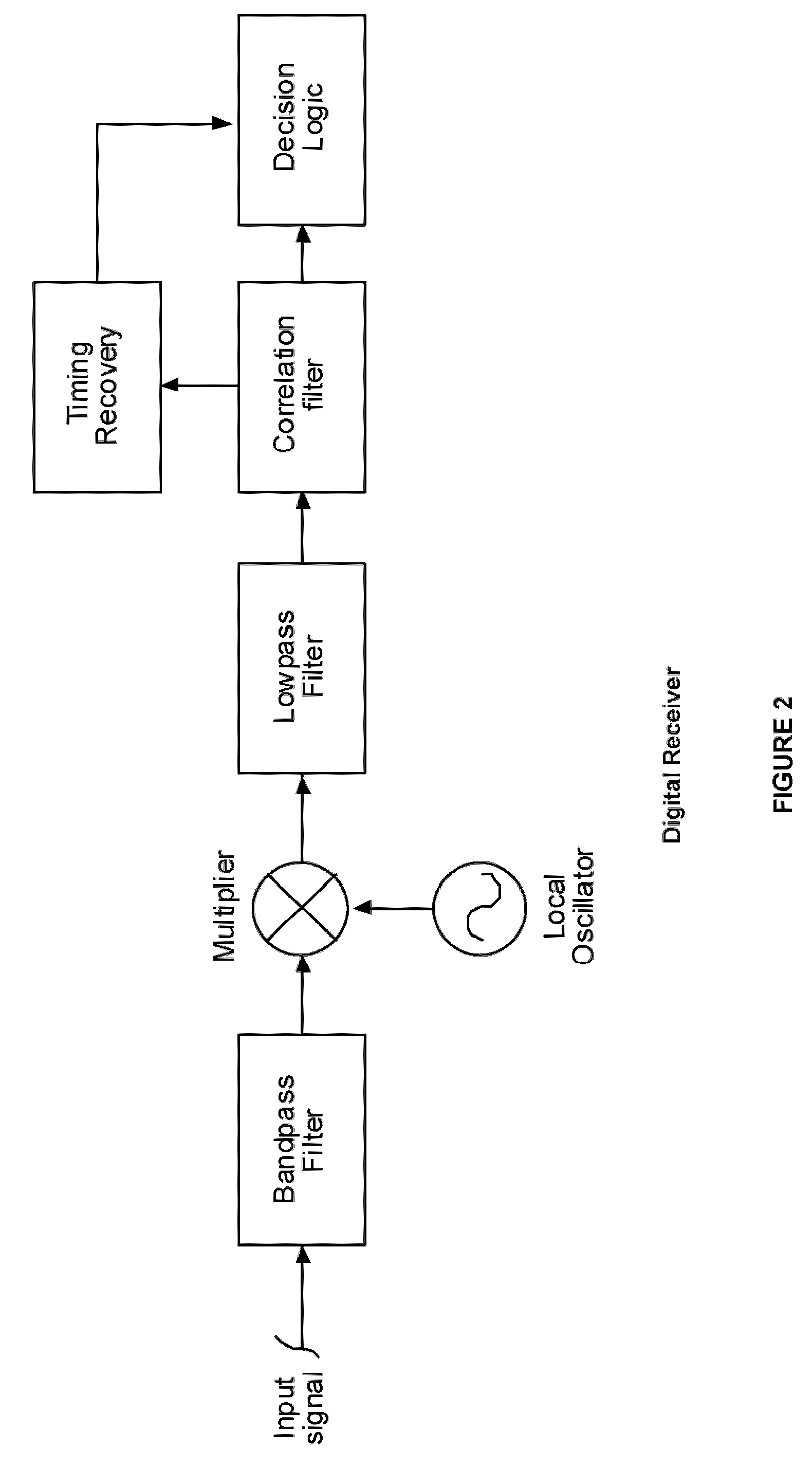Downhole Timing Recovery and Signal Detection
a timing recovery and signal detection technology, applied in the field of telemetry apparatus and methods, can solve the problems of narrow passbands with attenuations of 10 db or greater, frequency dependent destructive interference of signals within these passbands, and limited frequency bandwidth of acoustic signals transmitted up the drillpipe to the surface, so as to improve the detection and synchronization of acoustic signals and increase the operating baud rate
- Summary
- Abstract
- Description
- Claims
- Application Information
AI Technical Summary
Benefits of technology
Problems solved by technology
Method used
Image
Examples
Embodiment Construction
Overview
[0033]With reference to the figures, systems and methods of improved acoustic telemetry are described.
[0034]As noted above, the unique transmission characteristics of the down-hole environment within the available acoustic channels of a typical drill pipe string create an extremely difficult digital communications environment given that the frequency channel is a narrow, highly dispersive band-pass system with substantial levels of echoes, reverberation and attenuation.
[0035]As noted above, one digital communication scheme that has been used with success in this environment is a BPSK or PSK signal modulated on a linear chirp that is centered on one of the passbands of the channel. A working system using this approach is described in detail by Camwell and Neff in “Field Test Results of an Acoustic MWD System”.
[0036]The receiver in this system employs a correlation demodulator as described by Proakis pp: 234-238. In this case the demodulator correlates the received data stream...
PUM
 Login to View More
Login to View More Abstract
Description
Claims
Application Information
 Login to View More
Login to View More - R&D
- Intellectual Property
- Life Sciences
- Materials
- Tech Scout
- Unparalleled Data Quality
- Higher Quality Content
- 60% Fewer Hallucinations
Browse by: Latest US Patents, China's latest patents, Technical Efficacy Thesaurus, Application Domain, Technology Topic, Popular Technical Reports.
© 2025 PatSnap. All rights reserved.Legal|Privacy policy|Modern Slavery Act Transparency Statement|Sitemap|About US| Contact US: help@patsnap.com



